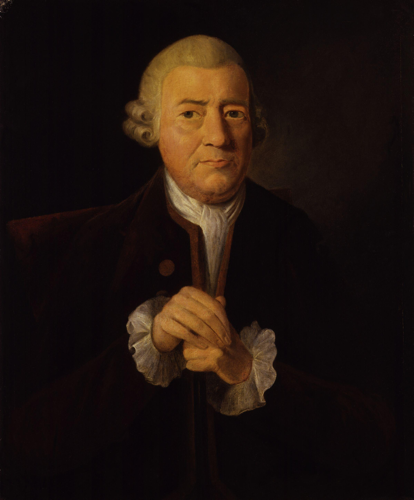John Baskerville

It might be the finest edition of the King James Bible ever produced but the man behind the Baskerville Bible was not an obvious choice for producing religious tracts. Although a believer in God, John Baskerville was a fierce critic of organised religion and was not afraid to let his views be known. He also lived out of wedlock with his long-term partner, Sarah Eaves, something that scandalised his contemporaries even more.
Outspoken and controversial he might have been, but he was cute enough to realise the commercial possibilities offered by religious books. Along with his version of the bible some of his masterpieces included the Book of Common Prayer (1762) and Milton’s Paradise Lost and Paradise Regained. He also produced editions of the Roman poets including Virgil’s works and a particularly fine edition of Horace’s poetry (1762).
Controversy continued to dog Baskerville even after his death in 1775. In his will, he stipulated that he be buried “in a Conical Building in my own premises, heretofore used as a mill, which I have lately Raised Higher and painted and in a vault which I have prepared for It. This Doubtless to many may appear a Whim; perhaps It is so – but it is a whim for many years Resolve’d upon, as I have a Hearty Contempt for all Superstition, the Farce of a Consecrated Ground, the Irish Barbarism of Sure and Certain Hopes etc”.
He went on to say that he considered “Revelation,as it is call’d, Exclusive of the Scraps of Morality casually Intermixt with It, to be the most Impudent Abuse of Common Sense which Ever was Invented to Befool Mankind”. Put like that, there was only one course of action – to obey his wishes to the letter.
Trouble came in July 1791 when the Priestley riots hit Birmingham, rioters targetting religious dissenters, foremost the controversial Joseph Priestley, but Baskerville’s home and resting place was also wrecked. The land was eventually sold to a developer who cut a canal through it, his workmen in 1821 finding Baskerville’s lead-lined coffin. This discovery raised the question of what to do with it, particularly given his trenchant views on consecrated ground.
Initially, the landowner put the coffin on display as a kind of morbid tourist attraction and then it was moved to a warehouse where a plumber is said to have used it as a workbench. Eventually Baskerville’s friends arranged to have the coffin moved to the crypt of Christ Church in Birmingham where it was laid to rest.
Even so the peregrinations of Baskerville’s body did not end there. The church was demolished in 1897 and he was moved once more, along with all the other bodies in the crypt, to consecrated catacombs at Warstone Lane Cemetery, where it remains today, despite a petition presented to Birmingham City Council in 1963 to move him to unconsecrated ground in accordance with his wishes.
As one commentator suggested, the journey of Baskerville’s body puts one in mind of Francis Thompson’s poem, The Hound of Heaven (1890), about an atheist fleeing God; “I fled him, down the nights and down the days;/ I fled him, down the arches of the years;/ I fled him, down the labyrinthine ways/ of my own mind”.
His legacy lives on, of course, in his magnificent books and his typeface and even his partner, Sarah Eaves, has a typeface named after her, developed in the 1960s.



